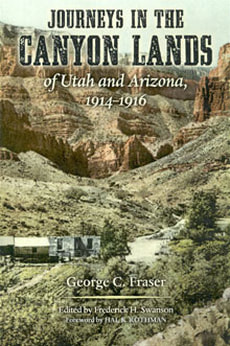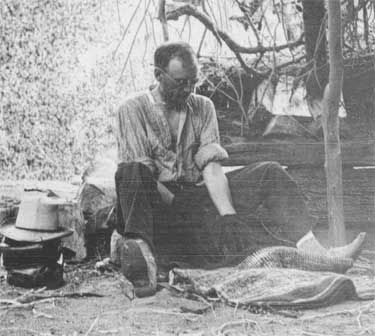George Corning Fraser was a Wall Street attorney with an unusual thirst for adventure. He traveled extensively throughout the Southwest in the early 1900s to study its magnificently exposed geology and learn about the lives of its inhabitants. A keen observer and an interested and sympathetic listener, Fraser conveys an engaging picture of life in the remote corners of the Colorado Plateau in the years before the automobile made its inroads. Traveling mostly on horseback, he spoke at length with sheepherders and forest rangers, townspeople and ranchers, community leaders and eccentric prospectors. His firsthand accounts will transport you to a time when explorers relied on their horses and their wits to take them into a fascinating and little-known backcountry.
Beginning in 1914, Fraser made a series of ambitious journeys on horseback and by wagon into the country lying between Flagstaff, Arizona and the Mormon towns of central Utah. Several qualities set Fraser apart from most travelers: he seemed ready for almost any adventure, no matter how difficult; he had a gift for careful observation, both of the landscape and of the people who lived and worked there; and (most important for us) he could relate his adventures in elegant and descriptive prose.
Beginning in 1914, Fraser made a series of ambitious journeys on horseback and by wagon into the country lying between Flagstaff, Arizona and the Mormon towns of central Utah. Several qualities set Fraser apart from most travelers: he seemed ready for almost any adventure, no matter how difficult; he had a gift for careful observation, both of the landscape and of the people who lived and worked there; and (most important for us) he could relate his adventures in elegant and descriptive prose.
|
In the company of one or more of his family members and his guide, David D. Rust of Kanab, Utah, he got into canyons and mesas that are still tough to reach today. Written in lively but straightforward language, Journeys in the Canyon Lands presents three of Fraser's detailed travel journals, covering trips he made to the Kaibab Plateau and Grand Canyon region, the Utah High Plateaus, and the northern Navajo Indian Reservation. He describes the Zion Narrows, the view from the Toroweap and Point Sublime in the Grand Canyon, the monoliths of Cathedral Valley and dozens of other stunning geologic features. He was intensely interested in people, and he got all manner of folks to tell him their life stories.
If you've wondered how the canyon country looked and felt to those who got there before the highways and tour operators, you'll enjoy these narratives from a most unusual observer and traveler. |
Reviews
“Fraser enlightens on multiple levels, with the first being his effort to document and inform . . . . The quality of Fraser’s accounts transforms him from average citizen trekking through the sandstone backcountry, into a larger than life icon of Progressive intellectualism.”
Sondra Cosgrove, Journal of the West, October 2005
“Mr. Fraser’s observations are brutally honest, often tender and compassionate, and frequently hilarious.”
Hank Hassell, Utah Historical Quarterly, Fall 2005
Sondra Cosgrove, Journal of the West, October 2005
“Mr. Fraser’s observations are brutally honest, often tender and compassionate, and frequently hilarious.”
Hank Hassell, Utah Historical Quarterly, Fall 2005

